أضِف لمسة من السحر إلى منزلك، مع أرقى تصاميم ورق الجدران
قد تتخيل أن ورق الجدران هو مجرد زينة بسيطة تُضاف إلى جدران منزلك، لكن في الواقع يلعب ورق الجدران دور أهم من ذلك، حيثُ يُمكن لورق الجدران أن يُعيد تشكيل مساحاتك الخاصة من جديد، ويضيف أجواء مميزة إلى منزلك، ويرتقي بنمط الديكور الخاص بك إلى مستوى آخر! إنه السحر الذي يحوّل الجدران الصامتة إلى لوحات تروي حكايتك الخاصة. وبسبب هذا التأثير القوي الذي يُحدثه ورق الجدران في تشكيل أجواء المنزل، فمن الضروري أن تستخدمه بحرص واهتمام.
خلال العقود الأخيرة، تأرجحت شعبية ورق الجدران بين الانتشار والاندثار. فبينما نرى جيلاً يتسابق لتزيين كل ركن في منزله باستخدام ورق الجدران، نجد الجيل التالي يقوم بتجريد حوائط المنزل منه، وذلك بحثاً عن التجديد.
واليوم، يعود ورق الجدران بثوب جديد وروح عصرية، وتصاميم جديدة تخطف الأنظار. وإذا كنت تطمح أن تظل تصاميم جدرانك شاهدةً على ذوقك الرفيع عبر الأجيال، وأن تتجاوز تقلبات الموضة، وتغير الأذواق، فعليك أن تنتقي ورق الجدران الخاص بك بعناية، وأن تستخدمه بشكل مميز وفريد. فالأذواق تتغير من وقت لآخر، ولكن "الذوق الرفيع خالد لا يزول" تمامًا كما تخبرنا دار المجوهرات العريقة "تيفاني آند كو".
التصاميم التجريدية (ابستراكت)
التصميم التجريدي هو فن يتجاوز حدود الواقع الملموس، ويقوم على بناء مزيج متناغم من الخطوط، والألوان، والأشكال، واللمسات الفنية، والتدرجات في اللون، أو من خلال اثنين أو أكثر من هذه العناصر.
في تصاميم ورق الجدران المستوحاه من التصاميم التجريدية، لن تجد رسوماً لأجسام حقيقية كالزهور أو الأشجار أو الصخور أو السحب أو الكائنات الحية. ومع ذلك، قد يستحضر المُشاهد (دون قصد) بعض الصور الحقيقية التي تشبه التصميم الذي يراه.
تأمل معنا تصميم ورق الجدران التالي، من "جانيللي وفولبي". يتميز هذا التصميم التجريدي بتدرجات لونية ناعمة، من الوردي الفاتح والبنفسجي والبيج، ليوحي بمشهد حقل من الزهور البنفسجية تتراءى عبر ضباب صباحي هادئ.

Jannelli & Volpi Wallpaper - Violet (5342)
https://www.sedarglobal.com/uae-en/wallpaper/jannelli-volpi/j-v/1037472
لماذا تختار التصميم التجريدي (ابستراكت)؟
التصميم التجريدي هو الخيار الأمثل للمساحات العصرية البسيطة. ولكن في نفس الوقت، يمكن أن يستخدم كعنصر تكميلي للعديد من أنماط الديكور المختلفة. على سبيل المثال، تصميم "جانيلي أند فولبي" السابق، يمكن يضفي سحراً خاصاً على غرفة نوم ذات نمط بوهيمي.
كما يتميز هذا النوع من ورق الجدران بتعدد استخداماته، فهو لا يقوم على رسم أجسام حقيقية، مما يجعل لكل عين طريقتها الخاصة في قراءته وتفسيره. أيضًا تلعب الإضاءة دورًا هامًا في طريقة استقبال أعين المشاهد له، وكذلك الألوان وقطع الأثاث والمفروشات الموجودة في الغرفة.
ويتميز ورق الجدران المستوحى من التصاميم التجريدية بقدر من التعقيد، مما يخلق أجواءً فريدة وعمقاً ملموساً إلى التصميم الداخلي، وذلك دون أن يطغى على المشهد.
تفخر سيدار بتقديم مجموعة من أرقى تصاميم ورق الجدران التجريدي. إليك بعضًا منها:

Versace Wallpaper - Yellow (IV-37048-4)
https://www.sedarglobal.com/uae-en/wallpaper/versace-home/versace-home/1145418
(Also available in Ivory, Green, Blue, and Black)
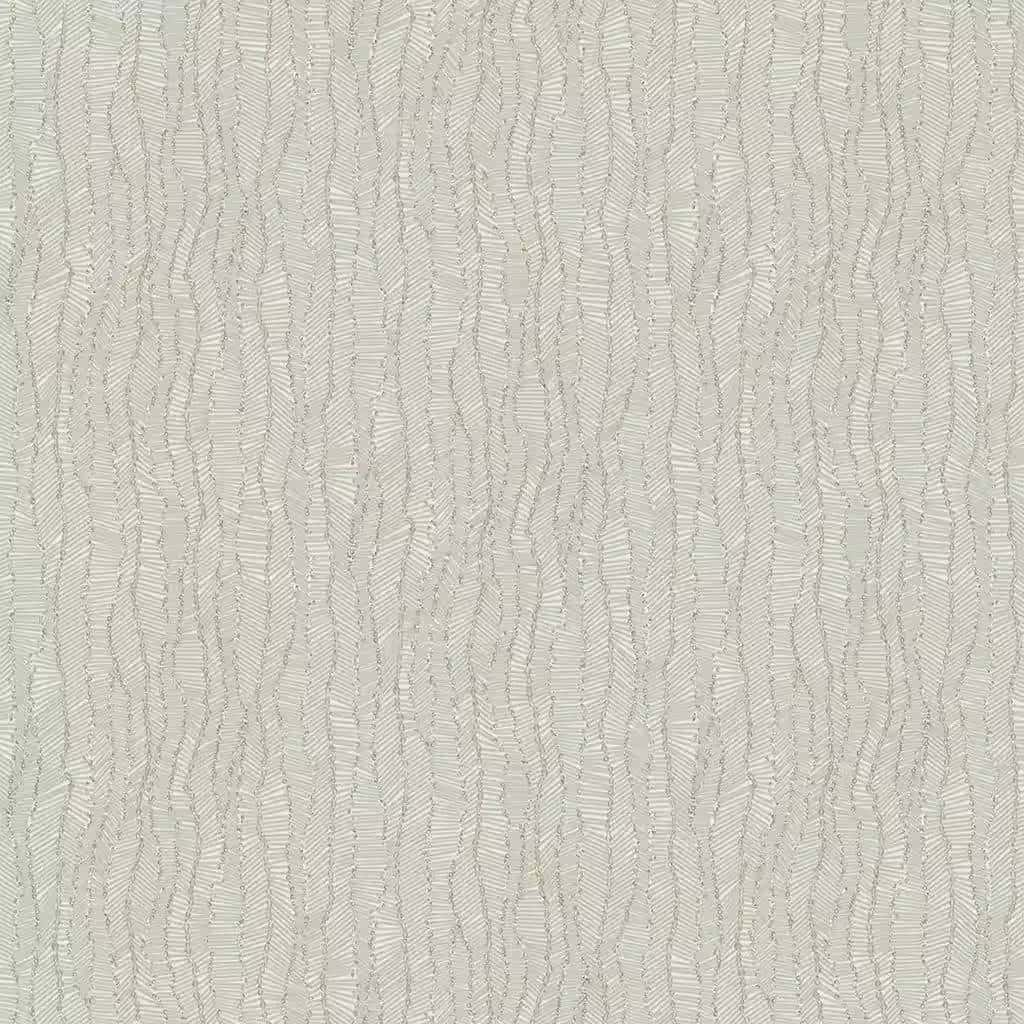
Armani Casa Exclusive Wallcoverings - Light Brown (GA5-9510)
https://www.sedarglobal.com/uae-en/wallpaper/armani-casa/armani-casa/1097989
(Also available in Ivory, Blue, Green, Silver, and Beige)
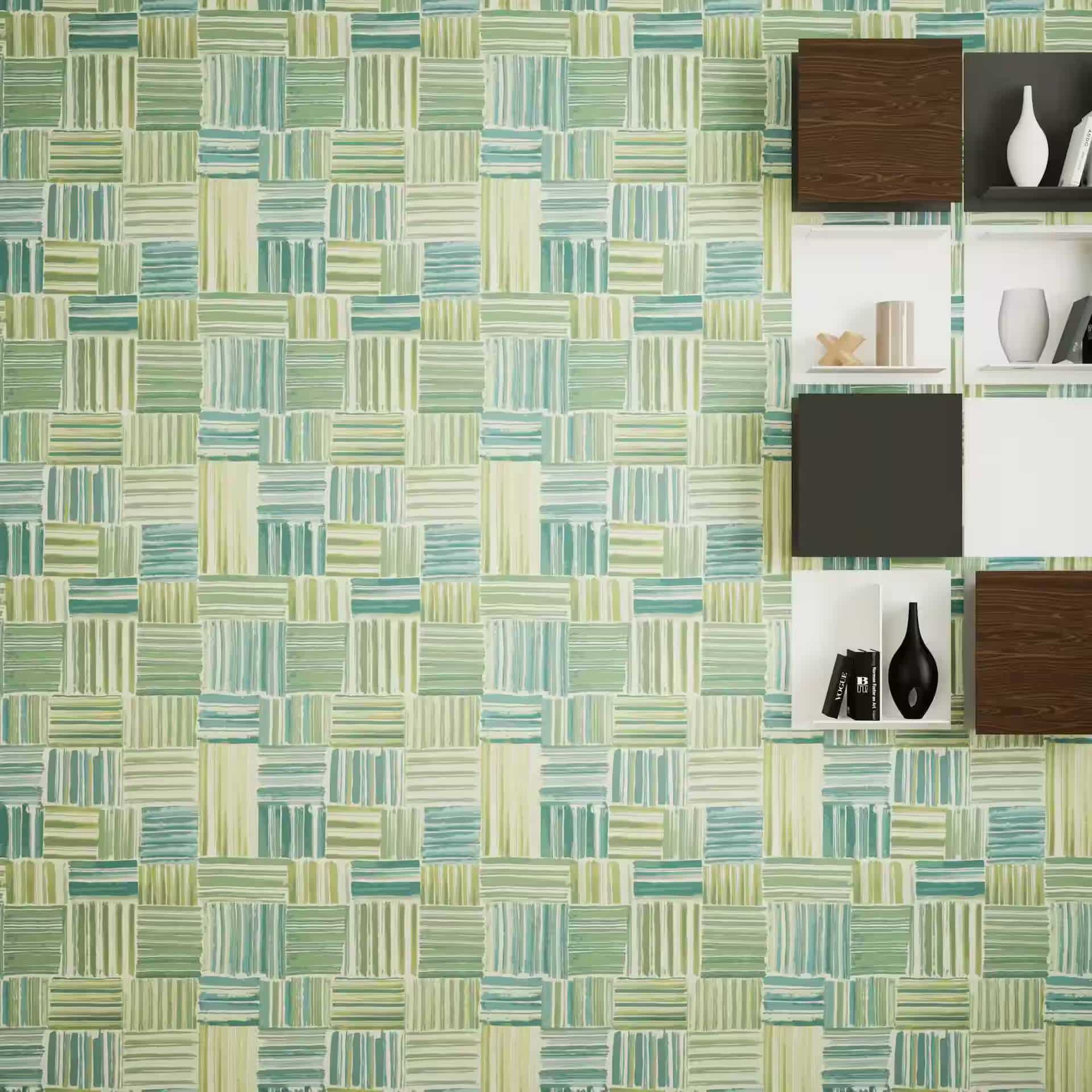
Premium Collection Wallpaper - Beige (A8010205)
https://www.sedarglobal.com/uae-en/wallpaper/premium-collection/premium-collection/1101277
(Also available in Ivory)

Missoni Home Wallcovering - Golden Oak (10260)
https://www.sedarglobal.com/uae-en/wallpaper/missoni-home/missoni-home/1248374
النقوش الزهرية (الفلورال)
تأتي النقوش الزهرية، أو تصميمات ورق جدران فلورال، لتضيف عمقًا طبيعيًا إلى غرفتك، وذلك من خلال تصاميم تتنوع بين الورود وأوراق الأشجار والغُصون، والتي تأتي بألوان فاتحة وهادئة، أو ألوان زاهية. وفي كثير من الأحيان تكون هذه النقوش واقعية للغاية، لدرجة تجعلك تظن أن ما تراه هو صورة فوتوغرافية في معرض لصور الزهور والنباتات، وليس تصميم. ورق جدران بساتين الفاكهة الأرجواني هو مثال على ذلك.
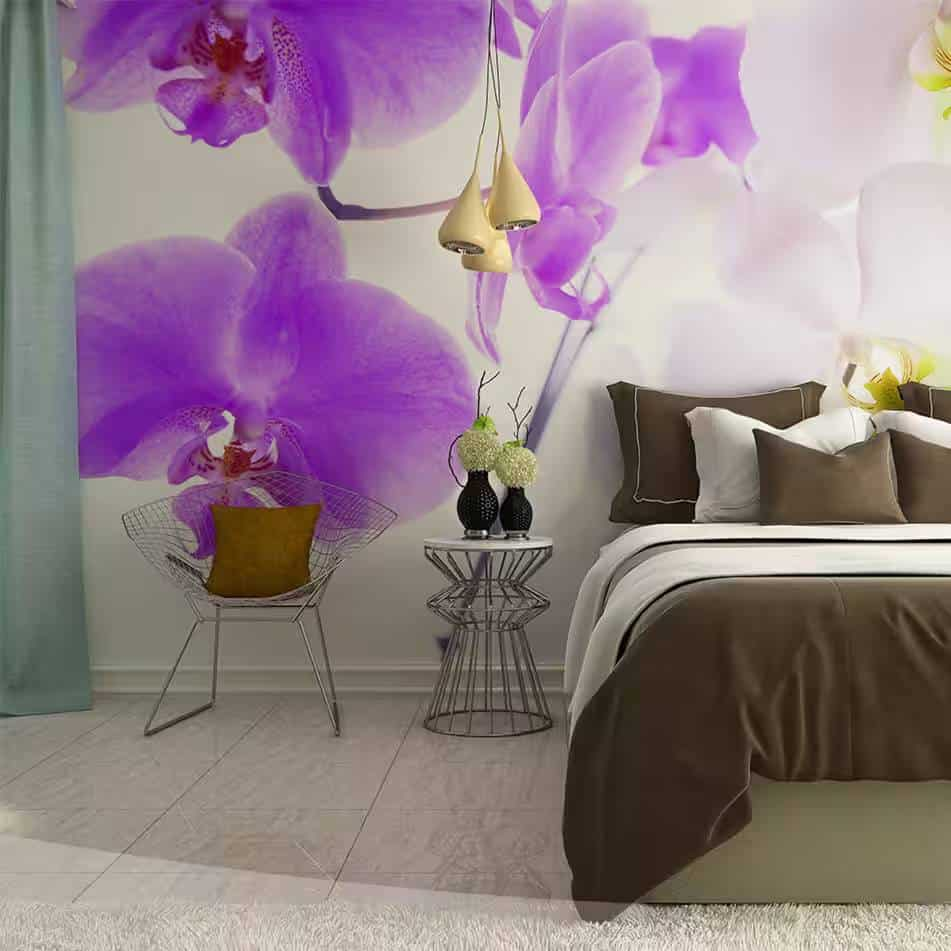
Graceful Orchids - 400x280cm - Purple (1414-SD)
https://www.sedarglobal.com/uae-en/wallpaper/mural-wallpaper/murals/1051970
كما تتوفر تصاميم زهرية أخرى بلمسة عصرية بسيطة، أو مزيج مبتكر يجمع بين الواقعية والتجريد الفني. قد تظنها للوهلة الأولى تصاميم تجريدية، لكنها ليست كذلك! حيثُ يتم استخدام الأشكال والخطوط البسيطة في التصميم، لكن في النهاية هي تعكس صورة لشئ حقيقي، كالزهور أو الأشجار وبشكل واضح، وليست رسماً تجريدياً. مثالاً على ذلك: ورق جدران ماركو بولو البني الفاتح في الصورة التالية.

Marco Polo Wallpaper - Light Brown (5014-GEN)
https://www.sedarglobal.com/uae-en/wallpaper/marco-polo/marco-polo/1018455
(Also available in Brown)
لماذا تختار النقوش الزهرية؟
تتحول النقوش الزهرية في يد المصمم الماهر إلى جدارية فنية تخطف الأنفاس. والتصميم الزهري الواقعي يحول جدارك إلى نافذة سحرية تطل على حديقة خاصة، تجذب العين وتأسر القلب.

Dream of Poppies - 400x280cm - Light Green (1418-SD)
https://www.sedarglobal.com/uae-en/wallpaper/mural-wallpaper/murals/1051974
كما تضيف النقوش الزهرية (الفلورال) لمسة رومانسية هادئة إلى غرفة النوم أو غرفة المعيشة. أما في غرف الطعام الرسمية والمساحات الكلاسيكية، فهي تضفي لمسة من الأناقة والفخامة، لا مثيل لها.
نقدم لك مجموعة مختارة من أجمل تصاميم ورق الجدران الزهري:

Marco Polo Wallpaper - Violet (3052-GCV)
https://www.sedarglobal.com/uae-en/wallpaper/marco-polo/marco-polo/1018531<
(Also available in Light Brown)
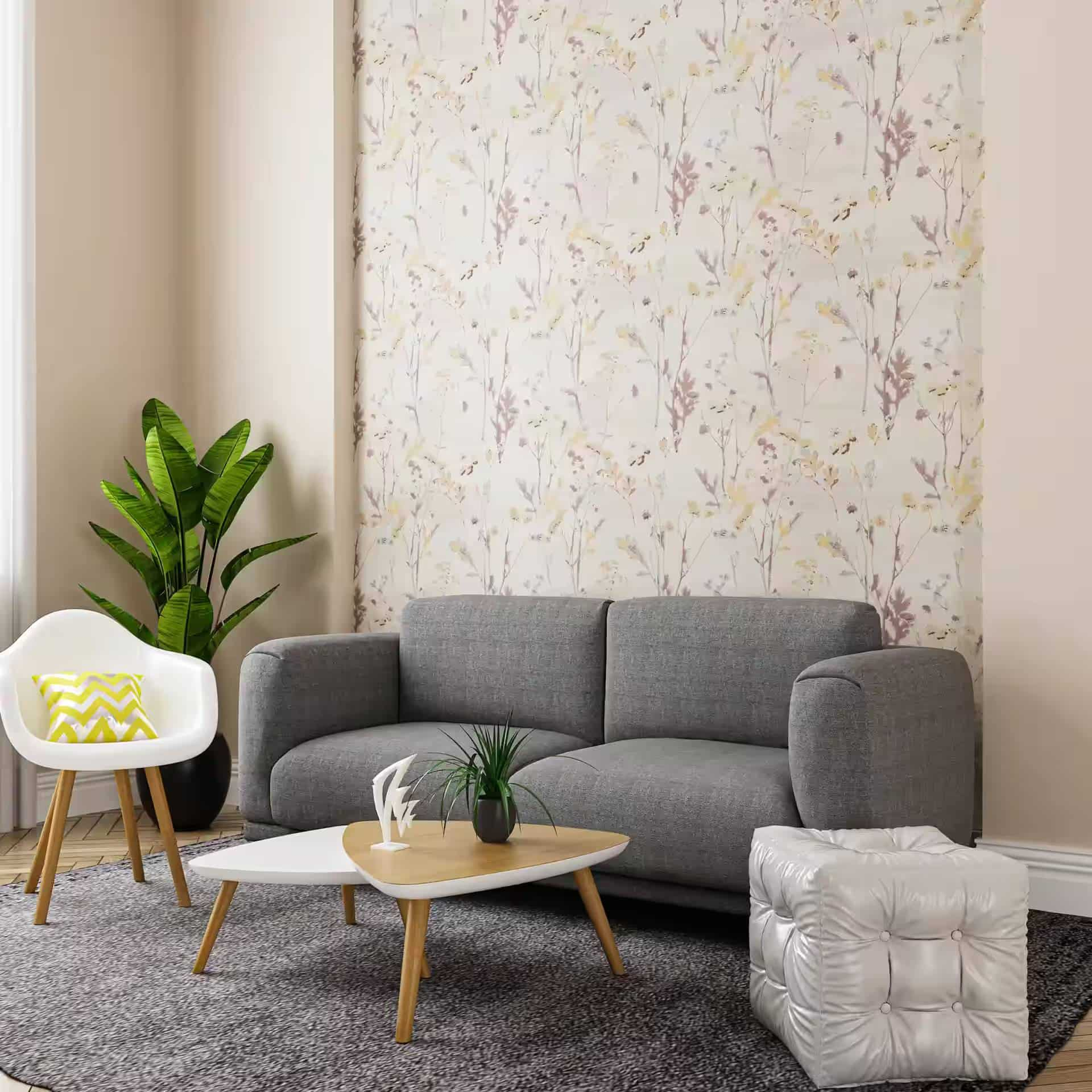
Jannelli & Volpi Wallpaper - Light Grey (5304)
https://www.sedarglobal.com/uae-en/wallpaper/jannelli-volpi/j-v/1037386
(Also available in Grey, Silver, Green, and Blue)

Versace Wallpaper - Green (IV-93585-6)
https://www.sedarglobal.com/uae-en/wallpaper/versace-home/versace-home/1145357
(Also available in Light Brown, Red, and Ivory)
النقش الدمشقي (داماسك)
إذا كان تصميم ديكور منزلك يقوم على النمط الفيكتوري، أو الأفكار الكلاسيكية، أو الطراز التقليدي، فإن ورق جدران داماسك هو اختيارك الأمثل. كما يتناسب أيضاً مع المساحات العصرية ذات التصاميم المبتكرة. تخيل مثلاً، كيف يمكن لورق جدران داماسك رمادي هادئ أن يضيف عمقاً وأناقة لمساحاتك العصرية البسيطة!
إن النقش الدمشقي، هو فن النسيج المزخرف بنمط جاكار، قد ظهر أولًا في الصين، ولكنه ازدهر وانتشر بشكل كبير بعد وصوله إلى مدينة دمشق السورية، لذا فهو يحمل اسم هذه المدينة العريقة. يتميز هذا النقش بزخارفه المتناظرة، والتي تصمم عادةً بدرجات لونية متناغمة، ويتم نسج هذه الزخارف كجزء من النقش نفسه. لقد ظل على مر العصور، ولا يزال، خياراً مفضلاً في تنجيد الأثاث الفاخر والتصاميم الراقية.
وعلى نفس المنوال، قد ظهر ورق جدران (داماسك) ليحاكي فخامة السجاد والأقمشة الدمشقية. لذا تجد فيه نفس الزخارف المتناظرة، والتي غالبًا ما تكون بتدرجات لونية أحادية، مع تركيز خاص على النقوش الزهرية. أما التصاميم المعاصرة، فتضيف لمسات مبتكرة، كالأشكال المتداخلة، أو اللمعة المعدنية، مع الحفاظ على روح التصميم الدمشقي الأصيل.

Marco Polo Wallpaper - Light Brown (3001-GCV)
https://www.sedarglobal.com/uae-en/wallpaper/marco-polo/marco-polo/1018534
يمكن استخدام ورق جدران داماسك في غرف الطعام الرسمية وغرف المعيشة وغرف النوم، خاصة تلك التي تحتوي على قطع أثاث منجدة بأقمشة الجاكار. وإذا كنت تفكر في دمجه مع ديكور عصري، فننصحك باستشارة خبراء الديكور لخلق توازن مثالي بين: عراقة التصميم، وحداثة الديكور.
لماذا تختار النقوش الدمشقية (داماسك)؟
النقش الدمشقي يمكن أن يكون خلفية مثالية للأثاث الفيكتوري. إنه يضفي عمقاً وثراءً إلى مساحتك، مما يجعلها تتألق في أجواء من الفخامة والأصالة.
نقدم لك هنا مجموعة مختارة من أفخم تصاميم ورق الجدران الدمشقي:
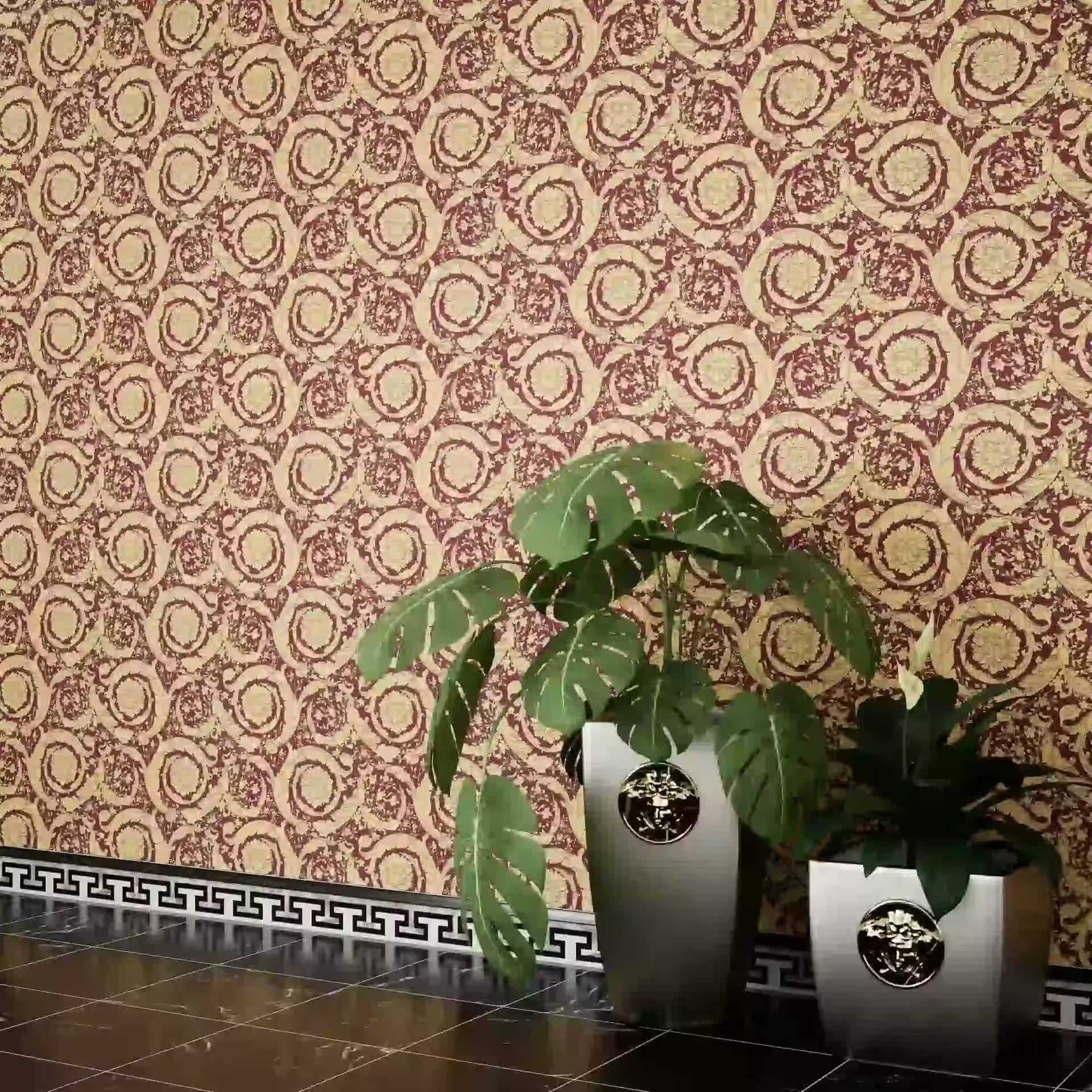
Versace Wallpaper - Red (IV-36692-7)
https://www.sedarglobal.com/uae-en/wallpaper/versace-home/versace-home/1145370
(Also available in Silver, Grey, Gold, Green, Pink, and Yellow)
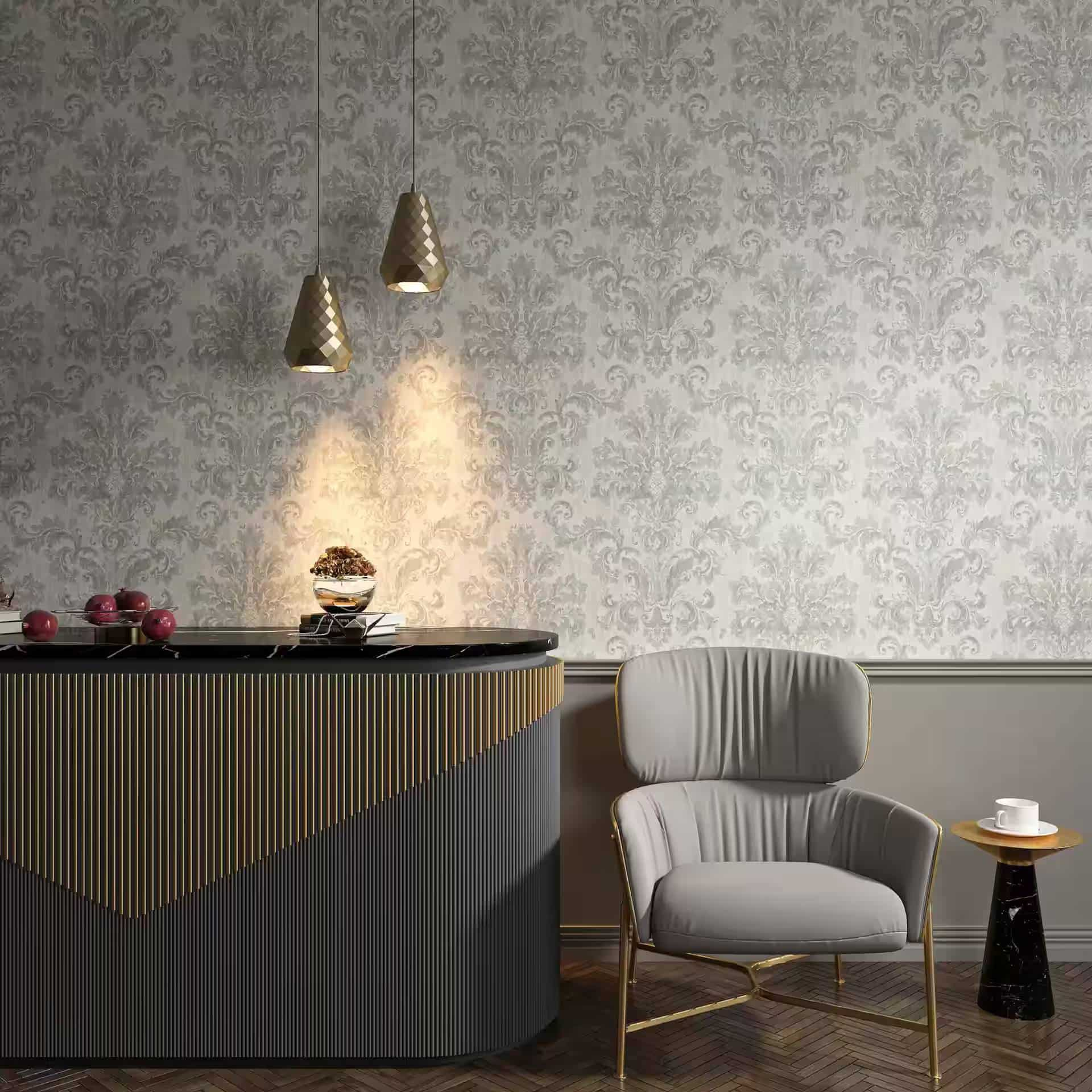
Jannelli & Volpi Wallpaper - Silver (5353)
https://www.sedarglobal.com/uae-en/wallpaper/jannelli-volpi/j-v/1037496
(Also available in Navy Blue, Dark Brown, Light Brown, and Green)
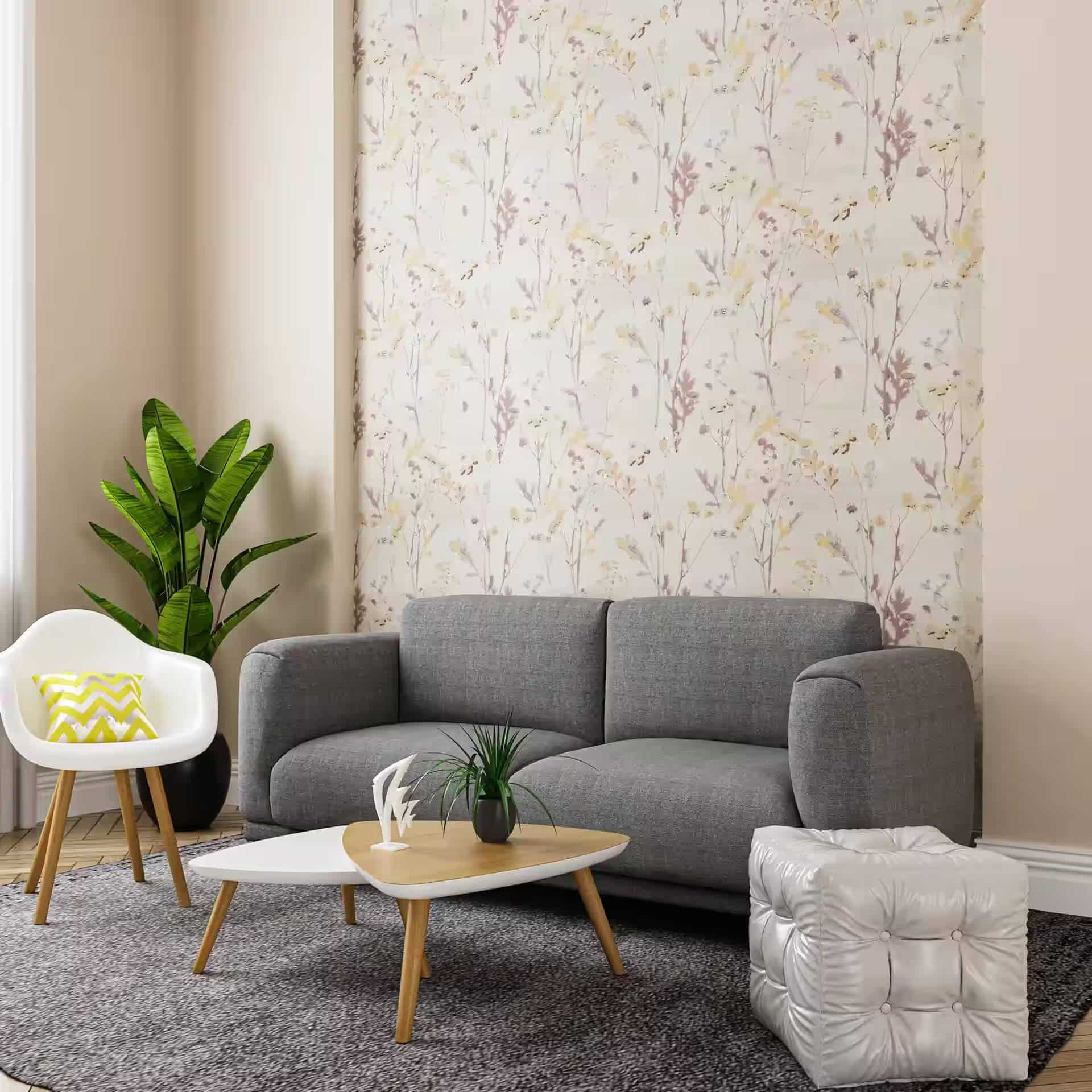
Premium Collection Wallpaper - Light Blue (GF62033)
https://www.sedarglobal.com/uae-en/wallpaper/jannelli-volpi/j-v/1037386
(Also available in Grey, Dark Cream, Beige, Ivory, and Light Grey)
ارتقِ بمنزلك مع أرقى تصميمات ورق الجدران
رغم تقلب الأذواق وتعاقب الأجيال، يظل ورق الجدران أيقونة مميزة في عالم الديكور. إذا كنت تبحث عن تغيير سريع لديكور منزلك، وإضافة لمسة من الأناقة إلى مساحاتك، فإن ورق الجدران هو وسيلتك الأفضل. التصاميم العصرية يمكن أن تحول جدارك العادي إلى تحفة فنية، وتمنح مساحتك روحاً جديدة كليًا، وبشكل سهل وسريع.
سيدار، الاسم العريق في تصميم أغطية النوافذ، والستائر، وورق الجدران منذ عام 1892، تضع بين يديك اليوم تشكيلة واسعة من أرقى تصاميم ورق الجدران. تصفح مجموعتنا واكتشف ما يناسب ذوقك، سواء كنت تبحث عن التصاميم التجريدية، أو النقوش الزهرية، أو الأناقة الدمشقية.



